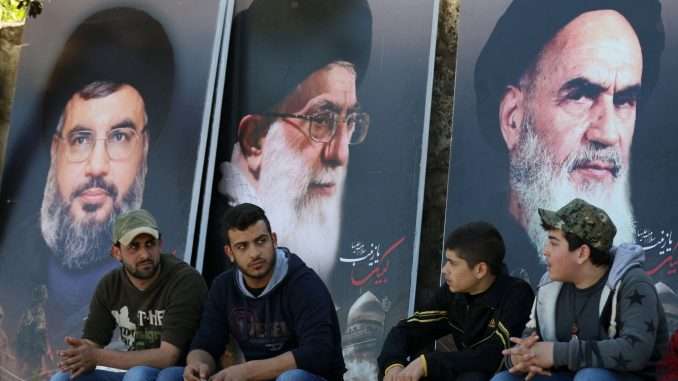
Israel has confirmed the death of Hashem Safieddine, the heir apparent to Hezbollah’s recently slain leader Hassan Nasrallah. Safieddine’s killing, which follows the assassination of Nasrallah in late September, is being seen as a major blow to the Lebanese-based militant organization and its future leadership structure. The announcement was made by Israeli Prime Minister Benjamin Netanyahu, who framed the event as part of Israel’s broader military operations against Hezbollah and Hamas amid ongoing regional tensions.
A Targeted Strike Amid Rising Tensions
Israeli officials revealed that Safieddine was killed in a precision airstrike targeting Hezbollah’s command center in southern Beirut, which had been under Israeli bombardment in recent weeks. The strike is part of a broader military campaign aimed at crippling Hezbollah’s infrastructure and eliminating key figures in the group’s leadership hierarchy. Safieddine, who had been positioned to take over the leadership of Hezbollah following Nasrallah’s death, was viewed as a pivotal figure in maintaining the group’s operational and political strategies.
For Hezbollah, the death of Safieddine represents not only the loss of a leader but also a potential weakening of its organizational structure at a critical time. Safieddine was known to be a pragmatic strategist, with deep ties to Iran and a strong influence over Hezbollah’s military and political wings. His death leaves a significant vacuum in Hezbollah’s leadership, with no clear indication of who might step up to replace him.
Hezbollah’s Response and Israel’s Escalation
In response to the news, Hezbollah has vowed to continue its resistance, with leaders expressing their determination to avenge Safieddine’s killing. Rockets were fired from Hezbollah-controlled areas in southern Lebanon into northern Israel, with Israeli Defense Forces (IDF) retaliating swiftly with a series of airstrikes. According to Israeli military sources, these strikes have targeted Hezbollah’s missile launch sites, weapons depots, and intelligence centers.
Netanyahu, in a public statement, reiterated Israel’s right to defend itself and emphasized that the country would not rest until Hezbollah was neutralized as a security threat. “We will not tolerate any threats to our people. Israel has the right to defend itself, and we will continue to take every necessary action to protect our citizens,” he said. Netanyahu also warned that Hezbollah’s aggressive actions, combined with its loss of leadership, would only accelerate its downfall.
A Region on the Brink
The death of both Nasrallah and Safieddine comes at a particularly volatile time for the region, with ongoing hostilities between Israel and Gaza’s ruling Hamas movement. The current conflict, which has entered its second year following the outbreak of war in October 2023, has expanded beyond Gaza’s borders, drawing in Hezbollah and threatening to spill over into a broader regional war. Tensions along the Israel-Lebanon border have been escalating since the beginning of the conflict, with Hezbollah launching periodic rocket attacks into northern Israel and the IDF conducting retaliatory strikes.
According to sources on the ground, Israel has deployed additional troops along the northern border with Lebanon and issued warnings to Lebanese civilians to stay clear of Hezbollah military installations. Meanwhile, U.N. officials have expressed growing concerns that the conflict could engulf the entire region if diplomatic efforts are not intensified.
U.N. Secretary-General António Guterres issued a statement warning that the situation was “on the verge of an all-out war” in Lebanon, with potentially devastating consequences. He called for both sides to exercise restraint and return to the negotiating table, emphasizing that civilian lives were at stake. Guterres also highlighted the need for humanitarian aid, noting that hundreds of thousands of people have been displaced by the conflict, both in Gaza and Lebanon.
Hezbollah’s Future Without Safieddine and Nasrallah
The dual assassinations of Nasrallah and Safieddine leave Hezbollah in a state of disarray. Over the past two decades, Nasrallah had built Hezbollah into a formidable force in both Lebanese politics and the wider Middle Eastern theater, with strong backing from Iran. Under his leadership, Hezbollah became an essential part of the so-called “Axis of Resistance,” a coalition that includes Iran, Syria, and various other militias operating in Iraq and Yemen.
Safieddine’s role as Nasrallah’s successor was seen as crucial for ensuring the continuity of Hezbollah’s leadership and its relationship with Iran. Now, with both leaders gone, questions are swirling about who might step into the power vacuum. Analysts suggest that Hezbollah may face internal struggles as various factions vie for control, particularly as external pressures from Israel and other regional powers increase.
Moreover, Hezbollah’s ability to maintain its influence in Lebanese politics may be at risk. The group has long positioned itself as a defender of Lebanon against Israeli aggression, but with the loss of two top leaders, Hezbollah’s narrative of strength and resilience may be significantly weakened. This, in turn, could lead to a shift in Lebanon’s political landscape, where Hezbollah’s dominance is already being challenged by economic crises and widespread public discontent.
Conclusion: A Precarious Future
As the dust settles following Safieddine’s death, Hezbollah faces its most significant crisis in years. Israel’s ongoing military campaign against the group shows no signs of abating, and with both of its top leaders now gone, Hezbollah’s future looks increasingly uncertain. While the group has vowed to continue its fight, its ability to do so effectively may be severely compromised. Meanwhile, the broader conflict between Israel, Hezbollah, and Hamas threatens to escalate further, with no clear path toward resolution in sight.
The region, as U.N. Secretary-General Guterres warned, stands on the brink of a wider war, with potentially catastrophic consequences for Lebanon, Israel, and the Middle East as a whole.
Report compiled by Obinna Ejianya (9News Nigeria – Melbourne, Australia)